Study of Light Changes on the Biological Carbon Pump
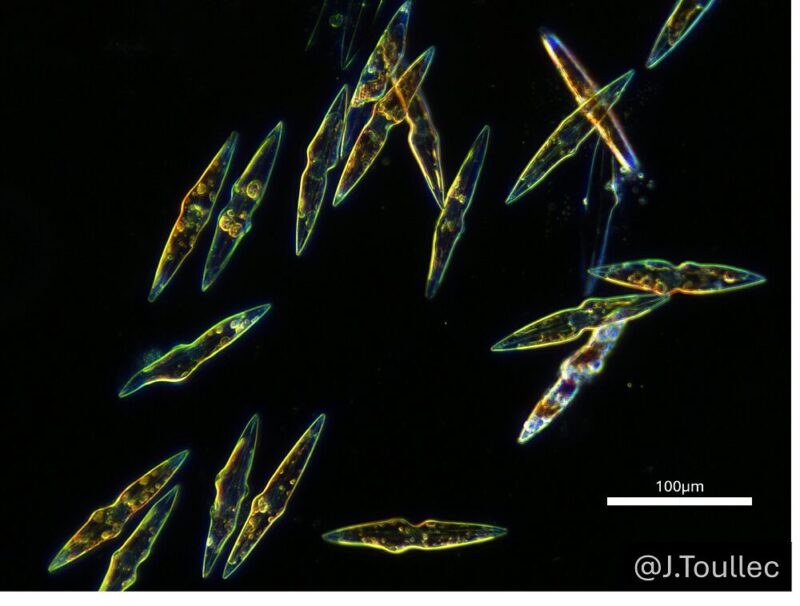
The ECLiPse Arctic project is studying Light Changes on the Biological Carbon Pump during the spring bloom in the Arctic Ocean
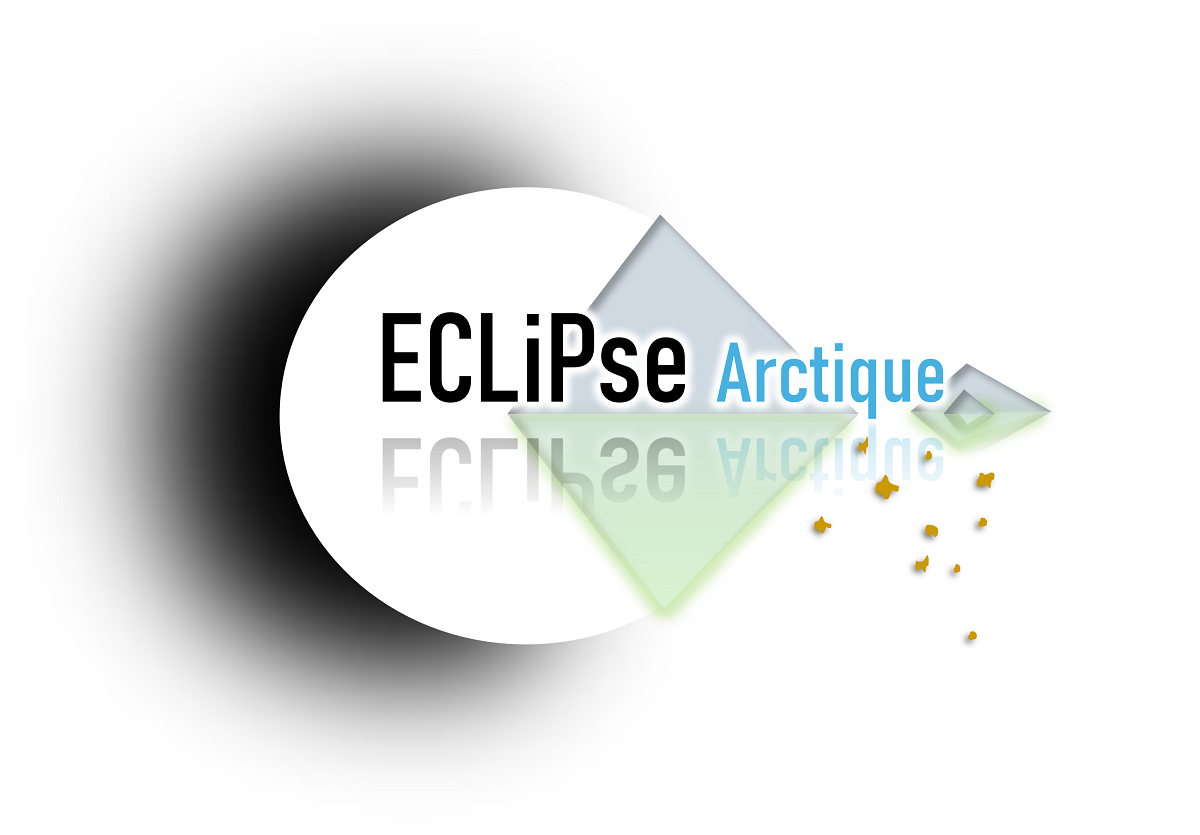
ECLiPse Arctique is a project resulting from the AAP Émergence which aims to understand the influence of changes in light regimes on the capacity of polar microalgae to sequester and export CO2 fixed by photosynthesis during the spring bloom in the Arctic Ocean (May 2025-May 2027). This project concerns ISblue 1 and 4 research themes.
Context
Over the last few decades, the Arctic Ocean has been affected by climate change, leading to changes in snow cover on the sea ice and in the thickness of the sea ice. These parameters play a decisive role in the spring bloom and associated carbon flows (aggregation, sedimentation and remineralisation), as well as in the food web that depends on them (zooplankton and benthic organisms).
In polar ecosystems, ice microalgae (sympagics) play a decisive role in the dynamics of primary production, but also in the dynamics of aggregate formation, which controls the flow of sedimentation in the water column. The formation of phytoplankton aggregates is the main driving force behind the oceanic biological carbon pump (BCP). Without the BCP, atmospheric CO2 concentrations would be twice as high as they are today.
Global warming, by reducing snow cover and ice thickness during the Arctic spring (April-May, Figure 1), could correspond to a situation closer to June (Figure 1) in terms of light intensity in the sea ice and in the water column. The polar amplification of global warming would therefore favour phytoplankton blooms in the water column earlier in the year, to the detriment of the ice algae that proliferate in the sea ice.
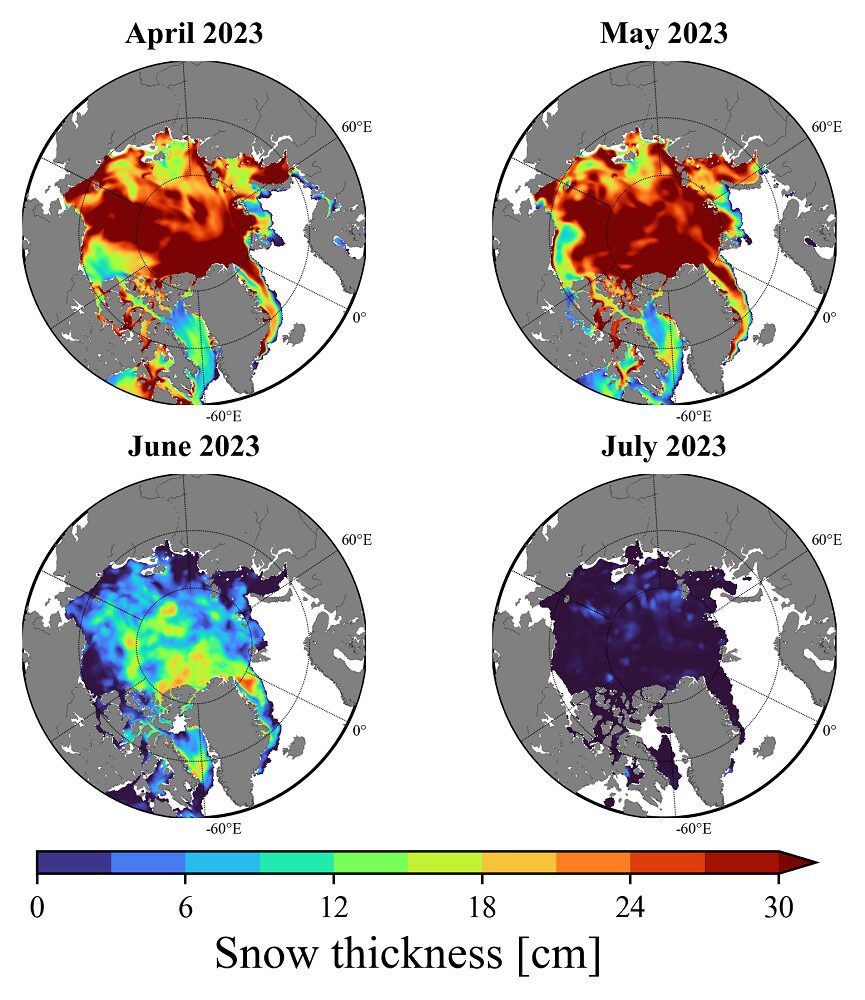
Problematics
Will changes in the light regime caused by the early melting of snow on the ice modify the capacity of Arctic pelagic phytoplankton to export carbon through cell aggregation and sedimentation? What would be the consequences for the quality of carbon export fluxes such as sedimentation rate, remineralisation of organic matter and fatty acid composition?
Objectives
To address this issue, the ECLiPse project aims to compare :
- In situ field measurements in the Arctic (campaigns in spring/summer 2025 and 2026, Figure 2)
- Results from controlled ex situ experiments with natural communities in wet laboratories at the Qikiqtarjuaq research station (Figure 2)
- The results of additional experiments carried out at LEMAR (IUEM climate chambers), in particular using a collection of polar microalgae grown in the laboratory (Figure 3)
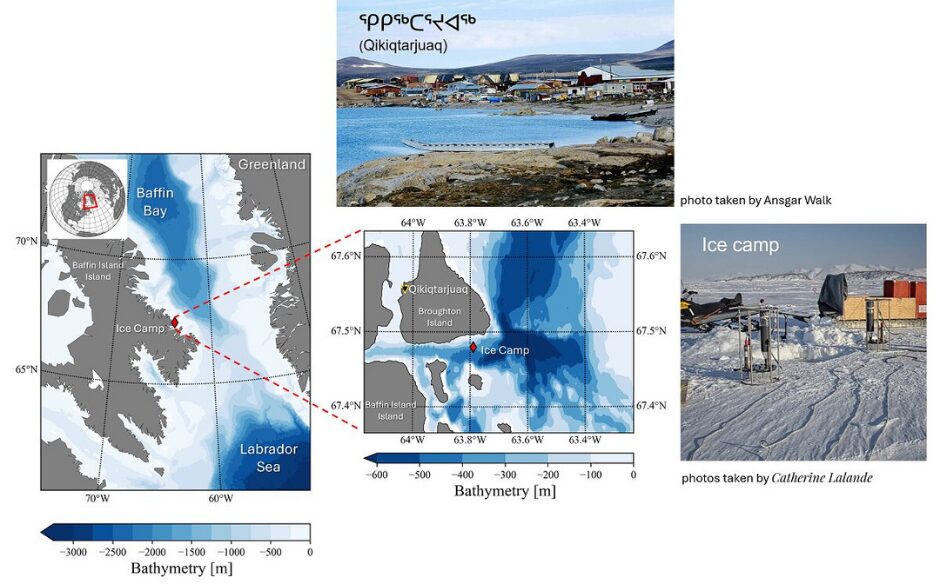
Location of the ice camp (sampling site) and the village of the Inuit community of Qikiqtarjuaq
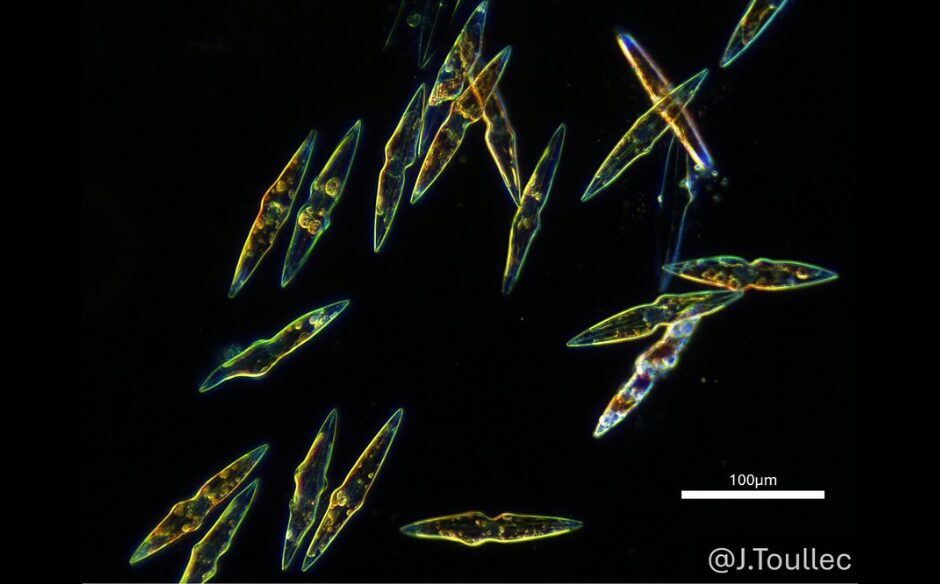
Ice diatom Haslea vitrea,
cultivated at LEMAR
Project leader: Jordan TOULLEC (Postdoctoral researcher, LEMAR, UBO)
ISblue research unit teams:
- LEMAR (UBO, CNRS, IRD, Ifremer) : Brivaëla MORICEAU, Johann LAVAUD, Gaspard DELEBECQ and Hana CHELLY
- LOPS (UBO, CNRS, IRD, Ifremer) : Camille LIQUE, Thomas GORGUES
External collaborations:
- LOG (ULCO, CNRS, IRD, Wimereux) : Luis Felipe ARTIGAS
- BOREA (MNHN, Station Marine de Concarneau) : Cédric HUBAS
- Takuvik, Université de Laval (Canada) : Rémi AMIRAUX, Marcel BABIN
 Attention, vous utilisez un navigateur peu sûr !
Attention, vous utilisez un navigateur peu sûr !